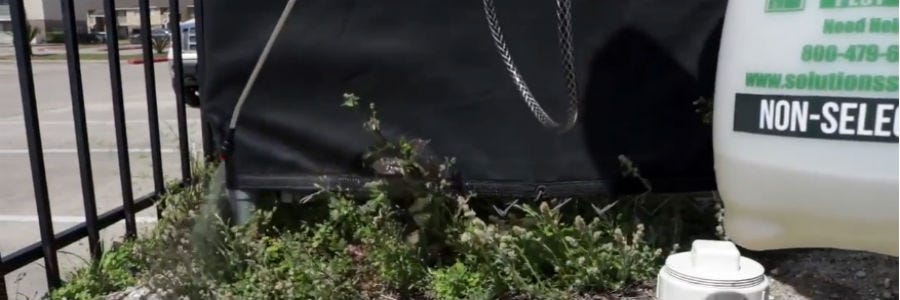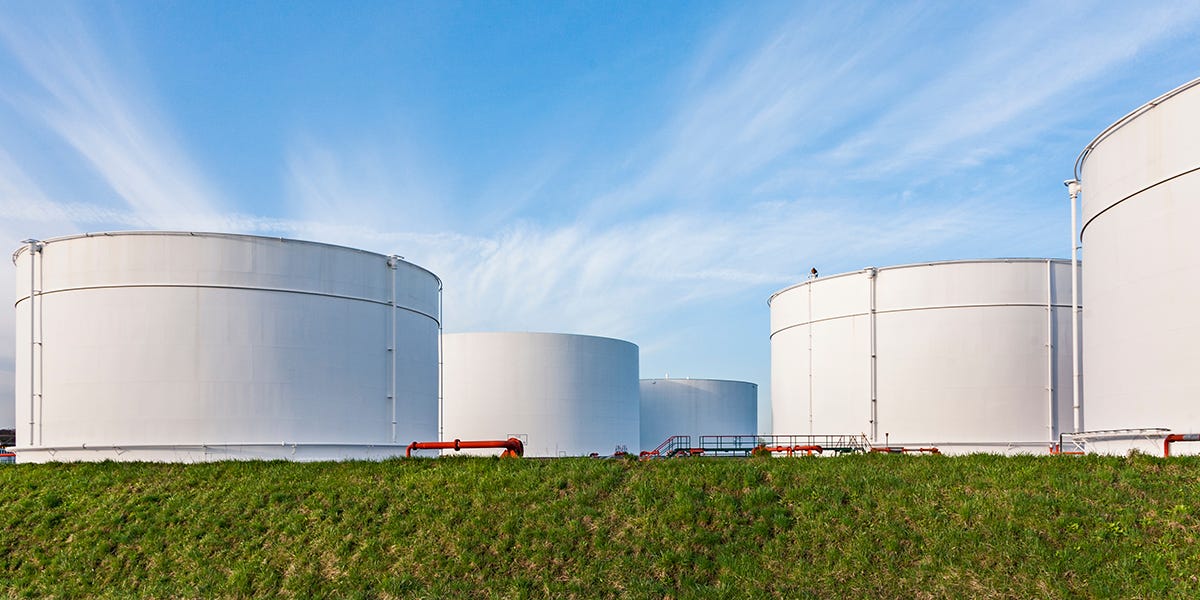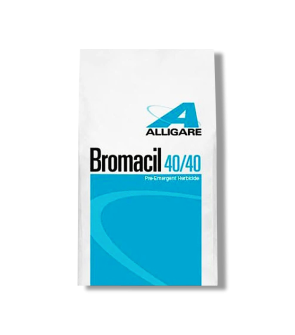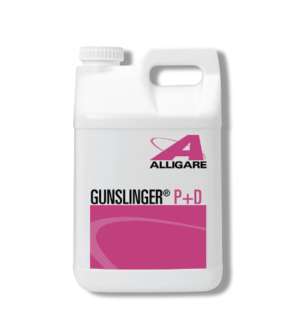Industrial Vegetation Management
Most Effective Products
Industrial Vegetation Management
Industrial Vegetation Management plays a crucial role in the safety, appearance and economics of our highways, railroads, utilities and pipelines. If weeds were left untreated on such sites, it can make things unsafe for workers and even be a fire hazard.
Vegetation like grass and other weeds (Trees, brush and shrubbery) can pop up and grow where they are not meant to grow. Invasive vegetation is known to grow on roadsides, energy transportation corridors, industrial sites, storage areas, military installations, pipelines and other service areas. Industrial sites are made on soil and earth so plants will adapt and try to grow in these spots if the opportunity arises. Industrial areas and rights of way are vital for the proper functioning of an industrialized society, but when weeds are growing in such areas, they can interfere with processes, damage equipment and facilities, make maneuvering difficult for industrial workers, and increase risk of fires and safety hazards.
Getting rid of unsightly vegetation on industrial sites can be a frustrating and costly task especially when invasive and hard-to-control weeds keep re-emerging. That is why we have put together an expert guide that explains how to use high-quality Industrial Vegetation management products that can help maintenance managers effectively and efficiently take care of problem weeds.
Identification

When conducting industrial vegetation management, the approach depends on a number of factors such as familiarizing yourself with the weeds that are growing. Any weed that grows on an industrial site is regarded as an undesirable plant because of the following factors:
- The plant growing in an area is creating a safety hazard or nuisance
- The plant is interfering with or hindering the normal operation or functional activities on the industrial site or right-of way
- The plant or vegetation is considered a noxious weed
- Hinder the growth of desirable plants in an area
- Causes damage to industrial structures, such as road surfaces, railroad ballast, utility wire poles or supports, and pipelines and pumping stations
- The vegetation attracts or becomes a habitat for unwanted wildlife
- Can become detrimental to crops and cropland if it begins to spread
Vegetation that is green with no bark can be controlled with Glyphosate applications. Those plants with bark such as trees and brush will require ester type herbicides more specific to these types of plant materials.
If you are seeing a specific weed creeping up on an industrial site, it would be wise to learn more about that weed to see how to best manage it. Refer to our weed categories to find the particular weed and see our detailed control guides for each plant.
Inspection

Where to Inspect
Unwanted vegetation can be found everywhere and exist in every type of terrain, soil, climate, vegetation complex and land-use area.
Industrial areas typically must be kept clear of the development of excessive amounts of brush or trees in other words, they should be killed at an early stage of plant development so they don't grow (literally and figuratively) to become a problem.
If routine monitoring and eliminating of developing vegetation is ignored, it can lead to the growth of hard to control woody plants that can be both an eyesore and a safety hazard depending on where they are growing and how much.
What to Look For
Whatever industrial area you are managing, its best to inspect what vegetation is growing and how severe it is. If its a minor growth, you can possible chop down or hand pull. If its a severe infestation, chemical management may be necessary. Careful attention should be given to areas that may have desirable vegetation nearby that can be harmed by drift from nearby applications.
Scanning the perimeter of the area as well as any nooks and crannies around the equipment and facility is of utmost importance but it can be tedious, complicated and time-consuming, especially if it is a larger site.
Recently, drone cameras have proven useful ways of inspecting an industrial sit for vegetation quickly and cost-efficiently so consider this as an option if you want a quick inspection then review the footage captured to see the spots that would need attention.
Treatment
Land Management herbicides like the ones we carry help keep weeds from growing on industrial sites. As always we recommend when using any of these type of herbicides to wear the proper protective equipment: gloves, goggles and a respirator mask.
Step 1: Choose Your Treatment Method.
The equipment used to apply herbicides for vegetation management on industrial areas come in two main types that for ground application and that for aerial spray. Ground applications may include foliar spray treatment, basal bark treatment, stump treatment, tree injection and soil treatment with pellets. Airborne equipment are those where the herbicide is carried and then applied via helicopter. For products we recommend Glyphosate or Bromacil. For woody plants we suggest Triclopyr. These products are non-selective and will kill any plant it comes into contact with.
Mix according to label directions.
Step 2: Foliar Treatment

Herbicides can be used as a foliar spray at either a high or low volume. These can be applied either using a hand sprayer, a backpack sprayer or a truck-mounted spraying rig where the herbicide is mixed according to the label with water and applied at a specific pressure and rate per acre. For best results, herbicides used in foliar treatments must be applied to the point of runoff in a sufficient volume of water to ensure sufficient coverage.
Step 3: Basal Bark and Stump Treatment
Another method of control is known as basal bark treatment. Basal bark treatment consists of a thorough coverage of the lower 18 inches of the stem and the root crowns of a woody plant. Herbicides mixed with oil are used for basal treatment. Basal treatment can be done at any time of the year; if done during the dormant season, less damage will result to susceptible crops nearby.
Stump treatments or cut stump treatments is another type of treatment method used to kill off trees that are unwanted. For the most possible success, stumps should be treated with a herbicide immediately after cutting, before the tissue hardens and dries around the cut.
Granule herbicides which typically come in pellet formulations can be applied in very small amounts by hand broadcasting or specific placement around the stems of unwanted shrubs or brush.
Large industrial sites will require equipment that is suitable to deliver larger volumes of material in an efficient way. We offer many options in herbicide delivery spray equipment. Please check our website and helpful guide on Spray Equipment options.
Prevention
Preventing regrowth of vegetation on industrial sites can be a little tricky. The best method is to regularly monitor growths around the facility and schedule semi-regular sprayings or applications of pre and post-emergent herbicide.
By keeping an eye on the conditions routinely, vegetation will not be able to reestablish itself where it isn't wanted.
Year long vegetation control can be achieved with the proper application of soil sterilant applied with sufficient water to penetrate the soil to a depth of 8-12 inches.
Key Takeaways
- Industrial vegetation management is a vital part of keeping facilities and right-of-ways safe.
- It's important to use a high quality professional herbicide when controlling these invasive plants as they are more effective and will keep the problem away for longer.
- When comparing our chemical herbicides to that of box stores, you will be saving more money over time since our concentrates yield more gallons over diluted general weedkillers.
- Always wear proper clothing, chemical resistant gloves and all required personal protective equipment when applying herbicides. Herbicides should not be applied when wind speeds exceed 15 MPH.













































































































































































































































































































































































































































































































































